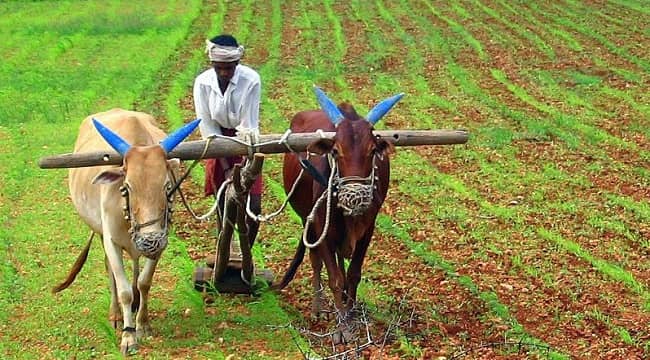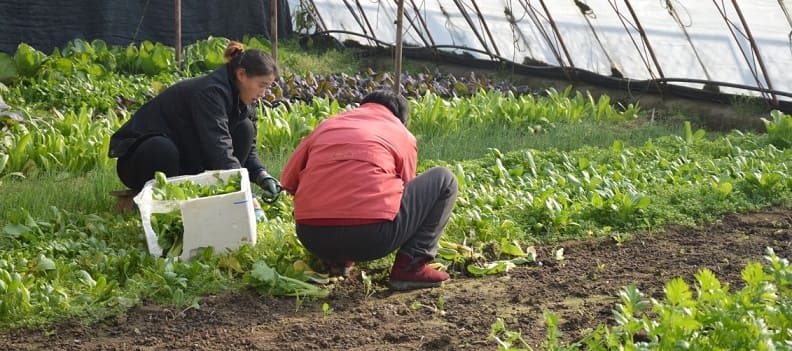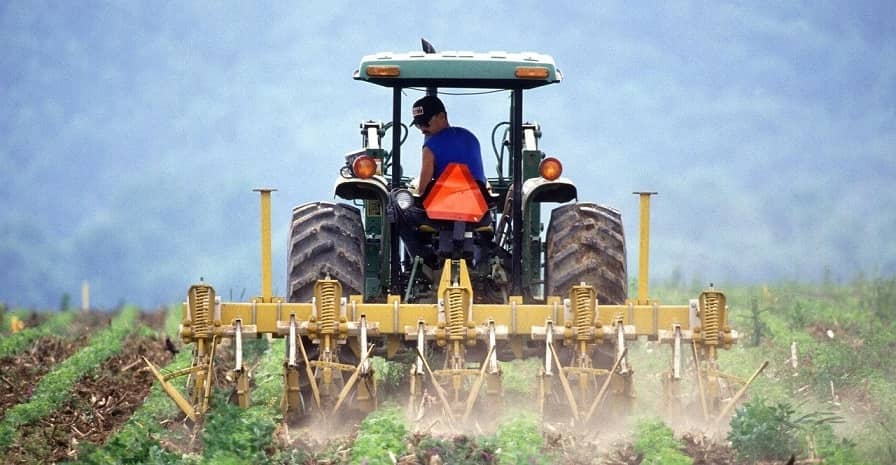Agriculture is the Heart of India, it exists in India since the Vedic times. Rig-Veda treatise describes various forms of agricultural activities, such as ploughing, irrigation, and cultivation of fruits and vegetables. Even rice and cotton were cultivated in Indus valley. In late 19th century and early 20th century, the practice of Organic Farming emerged with great and flawless success.
Here we’ll be dealing and coming to know some of the knowledge about organic Farming in India.
Organic Farming in India:
Organic farming may be defined as “a combined farming system dealing with sustainability, enhancing the fertility of soil and biodiversity, use of traditional pesticides and fertilizers with modernization and urbanization.”
Organic farming avoids the use of synthetic pesticides and fertilizers, genetically improving livestock and food additives.
Organic agriculture markets have internationally flowed and legally followed by various nations. In 1972, for reinforcing organic farming and maintaining its importance, an international organization was formed, named, “International Federation of Organic Agriculture Movements (IFOAM)”.
Organic farming methods can increase agricultural productivity; preserve the future environmental damages into sustainable developed network leading to improvisation of food and living qualities. Organic farming is one of the best ways to promote food security and self- sufficiency.
It’s an aggregate production management system that promotes and enhances agric-ecosystem health; biodiversity, ecological cycles, etc.
Various researches and studies have shown that organic farming methods can eventually increase productivity than conventional methods. The emphasis layed on small scale integrated farming methods has a vital role to urbanize the rural areas and develop it in every aspect.
In early 20th century, organic farming agricultural system flourished and rapidly changed the way of farming practices. Since 1990, organic food markets have grown rapidly, and the demand has driven a small increase of around 63 billion dollars worldwide by 2012.
In 2018, the approx area farmed organically all over worldwide is almost around 57.8 million hectares (1.6% of total world farmlands). According to the “World of Organic Agriculture 2018”, India accounts for only 1.5 million hectares of organic farmland in the world. In the 1990’s a trend of standard legislation began with “1991 EU-Eco-regulation” developed by Europeans, setting methods and standards for 12 countries.
History of Organic farming:
Agriculture was practised for thousands of years without the use of agrochemicals and artificial fertilizers. Artificial fertilizers were first created during the mid-19th century. These fertilizers were cheap, powerful, and easy to transport.
In 1940, founder of the organic movement, Albert Howard, published his work, “Agricultural Testament”. In this book, he adopted North Bourne’s terminology of “organic farming”. For this, Bourne became “Father of Organic Farming”.

The term “Eco-agriculture” was termed in 1970 by Charles Walters, to describe agriculture which does not use “agro-chemical pesticides”, rather use “organic matters”. Rapid increase in environmental awareness among people in modern times has transformed the originally supply-driven organic movement to a demand-driven one.
Also Read: Difference between mixed cropping and intercropping
Methods of organic farming in India:
Organic agriculture is nothing but the production system that sustains and maintains the health of soil, biodiversity and ecosystem. It depends on ecological processes, bio-cycles adapted to local conditions. Organic agriculture includes the combined form of tradition, innovation and modernization with science to benefit the environment.
Organic farming methods include the scientific knowledge of ecology with modern technology and traditional farming practices. While conventional farming practices uses synthetic and water soluble pesticides and fertilizers, organic practices restricts to the use of natural and traditional pesticides and fertilizers.
The principal methods of organic farming are:
- Crop Rotation
- Compost
- Green manure
- Cultivation etc.
These methods use the natural resources and increase the agility of soil making it fertile enough, binding nitrogen and potassium bicarbonate to soil.
Crop Diversity: Crop diversity is majorly initiated by organic farming. It cultivated the new roots of “POLY CULTURE”. Crop diversity helps the environment to bind the useful species and microorganisms for its good health.
Soil Management: Organic Farming implies heavily on the natural breakdown of organic and natural matters, using bio-compost and green manures. It provides the soil, the useful nutrients which are taken by the previous crop. It includes a variety of methods to improve the soil fertility, like crop rotation, cover cropping etc.
Weed Management: Organic weed management supports weed binding in the soil which improves the quality of cultivation. Organic standard methods require regular rotation of crop which prevents the soil fertility to be lost. Tillage, Mulching, Mowing, Bioherbicides etc. are some of the mechanical and physical weed controlling mechanisms.
Government Schemes:

The Government of India is promoting and spreading wide area of organic farming through various schemes and opportunities:
- National Project of Organic Framing (NPOF): A total of Rs. 60 lakhs is provided through NABARD, for establishment of bio-pesticides units, and agro-waste management.
- National Horticulture Mission (NHM) & Horticulture Mission for North East – Himalayan States (HMNEH): A financial assistance of around Rs.5.00 lakh is provided to group of farmers covering an area of 50 hectares for vermin compost production.
- Rashtriya Krishi Vikas Yojana (RSVY): Assistance for promoting organic farming methods is provided with State Level Sanctioning Committee.
- National Project on Management of Soil Health and Fertility (NPMSHF).
- Paramparagat Krishi Vikas Yojana (PKVY) Etc.
Advantages of Organic Farming:
Organic Farming is not only a practice for growing agricultural health but also adds value to multiple stages:
- It helps to reduce the level of pollution (water, soil etc.).
- It reduces the health of human and animal by reducing the level of residues in products.
- It helps to keep the agricultural environment sustained.
- It reduces the risk of soil erosion and loss of soil fertility.
- It not only saves energy for both animal and machine but also reduces the risk of crop failure.
- It improves the physical quality of soil like water holding capacity, granulation, etc.
- It also improves the chemical properties of soil like soil nutrients, & promotes favourable chemical reactions.
- It creates higher natural levels of resistance to pests & diseases.
- It enhances soil health and supports pollinators.
- There are no worries about genetically developed food articles.
- Using green manures and composts, farmers can make their own fertilizers.
- It can be grown in almost any geographic location with growing seasons.
Limitations of Organic farming:
- Most of the organic farmers do not have other subsidies rather than organic agriculture.
- It requires very large work process to produce sale ready goods.
- Specific and keen knowledge is required for localized growing system.
- There are very less and unique marketplaces for sale of organic articles.
- Organic farms and foods must have a rigorous certification process.
- Synthetic chemicals are still used in organic farming for faster results.
- The spoiling rate of organic articles is very high.
- The product cost ranges very high compared to conventional cultivated articles.
- It requires processing before application.
- Excess nutrients in lakes, ponds, water bodies can cause algal blooms.
- The use of land for organic farming is almost 84% more than equivalent harvest land.
Support for organic farming:
- China: Since 1990’s, Chinese govt., especially the local govt. has provided various supports for the development of organic farming. They developed mini organic gardens for demonstration, provides training for organic culture, subsidize organic certification fees, organic pest repellent lamps etc. the government has also been playing the role in establishing and promoting the market value of organic articles.
- India: In 2016, the northern states of Sikkim achieved its goal of becoming 100% organic farming State. While other states like Mizoram, Rajasthan, Kerala etc. are in way of shifting fully to organic farming. As of 2018, India has the largest number of organic farmers with 30% of total world’s organic farmers. And also it has around 83.5 Lakh certified organic articles.
- Dominican Republic: They have successfully converted a large amount of banana crop to organic cultivation. It accounts for over 56% of total worldwide banana production.
- Austria: It’s one of the countries with the highest percentage of organic farms in the EU. In 2011, Austria govt. paid 170 million Euros to organic farmers for their cultivated products. They also implemented many plans and strategies aiming to improve the market share of organic articles.
- Thailand: In 2005, Thai govt. launched a 5- year program aimed to support 4 million organic farmers to work with organic inputs rather than agrochemicals. It aimed to boost organic imports by 100%.
Principles of Organic Farming:
- Health: Organic agriculture must contribute to the health and well being of soil, and ecosystem. Health principles are the most ambient point of organic farming.
- Ecological Balance: An organic farming model on a living ecosystem must be prepared to fit ecological balance and cycles.
- Fairness: Organic farming provides a good quality of life and helps in reducing soil fertility.
- Care: We should practice organic agriculture in a careful and responsible way in order to sustain present and future generations and the environment.

Organic Market in India:
- India is considered to be the largest producer of organic cotton all over the worldwide.
- India stands for 30% of the world’s organic producers in India.
- Every year, India exports over 300 products in 20 different categories.
- In 2015-16, India exported over 1.35 million metric tons of “certified organic” food.
- India merges out with 1.7% of total global imports of organic products.
- The country has approx 1.1 million certified farmers, more than 28 million ha of organic certified farmland.
- Indian organic market will flourish to grow at a CAGR of over 23% by 2023.
- Sikkim is being the 1st 100% organic state wining “Oscar for best policies”.
- Sikkim beat 51 nominations from 25 different countries of the world to win “The Future Policy Award 2018”.
Economics of Organic Farming:
The economics of organic farming comprises the study of the entire process and effects of organic farming in various terms- society, cost, opportunity, consequences etc.
- Although economics is a broad scoped area, agricultural economics tends to focus on yields and efficiency of farming. Traditional organic farming is labour and knowledge-intensive area. The market of organic products are the strongest in North America & Europe, which estimated by 2001, had around 20 billion dollars global market. Australia has 39% of organic farmland (6,400,000 ha), followed by Argentina with 3.1 million ha, china with 2.3 million ha, & U.S with 1.6 million ha.
- In 2001, the global market value of certified organic products was estimated at 20 billion US dollar. By 2002, it was 23 billion US dollar and by 2015 it was estimated at around 43 billion US dollar.
- In the United States, organic farming increased 2.7 to 3.8 times more profitable for the farmer than conventional farming. Globally, organic farming initiates between 22 and 35 percent more profitable for farmers, as per analysis of studies conducted across five continents, 2015. The price for organic food is an important factor in the economic stability of organic farming.
- In the recent assessments of the energy efficiency of organic agriculture, results have been shown regarding carbon efficiency. Organic farm systems have more often not been found to be more energy efficient. Besides anything, results tend to depend upon crop type and farm size.
- Organic production is more labour-intensive production. This increased labour cost is one factor that makes organic food more expensive. Organic agriculture can contribute to ecological sustainability, especially in developing countries.
Conclusion:
Organic Farming is considered to be the best obtained from nature, and best for our nature. Organic farming is considered to be the best and most viable alternative for traditional farming techniques. Its advantages are much higher which suppresses the limitations.
Not only in India, but organic farming is eventually increasing its value worldwide. The awareness of environmental quality and health is often promoted by environmental groups, especially in developed countries. The resulting demand for organic products creates the opportunity to sell organic products at good effective prices, enabling organic farmers to continue, and often expand their farms. By. Nikhil Nivedan Vatsa.

Wow ! That\’s so great . I got so much to learn about organic farming. Thanks to this article. Very much knowledgable .
Thanks Ritika…